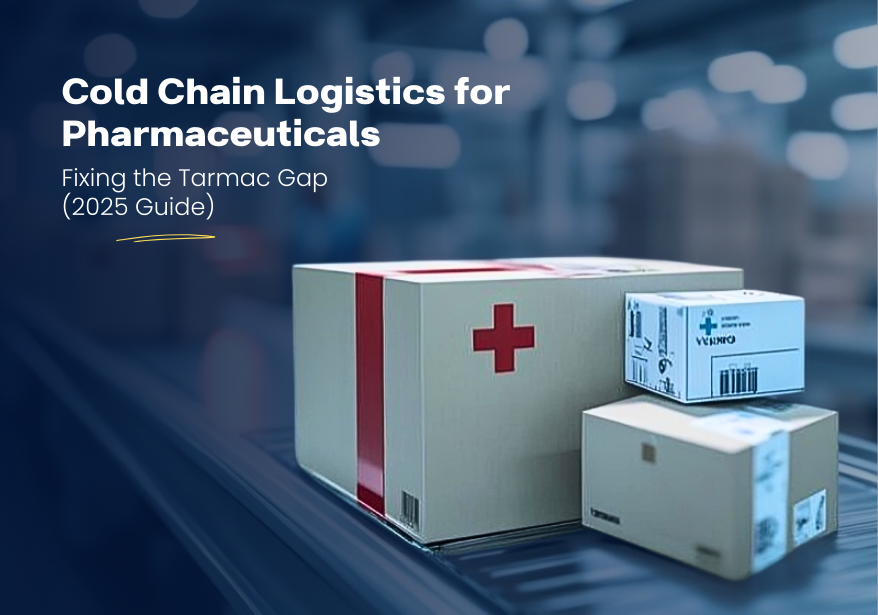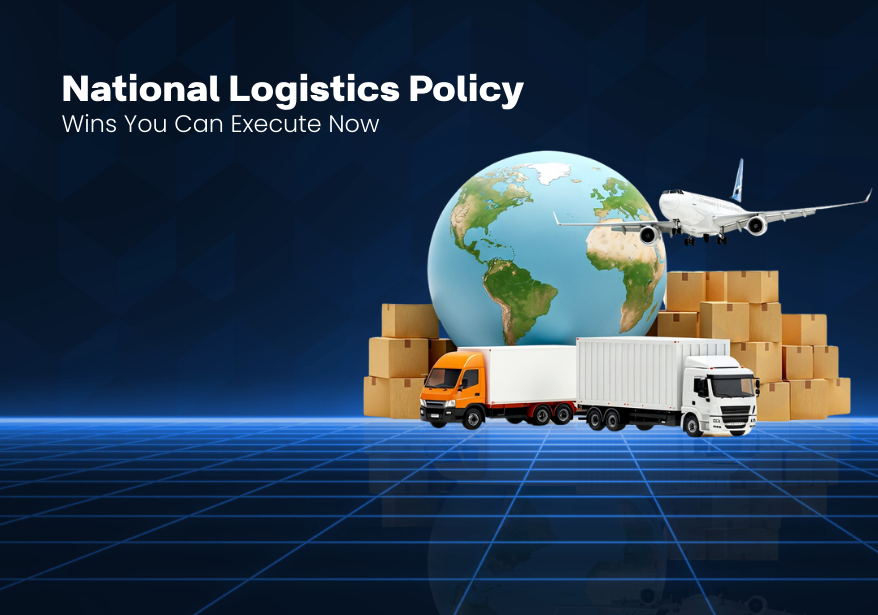The tarmac gap uncontrolled exposure during airport handling remains the weakest link in pharma cold chain logistics. In 2025, leaders can close it with smarter tech, stronger airport infrastructure, and tighter coordination.
Introduction: Why the Tarmac Gap Still Matters in 2025
Imagine a shipment of life‑saving vaccines landing in peak summer. A delay leaves pallets on a scorching runway. Minutes later, the cold chain fails and product integrity drops. This “tarmac gap” remains a critical weak point.
Today, biologics, cell and gene therapies, and temperature‑sensitive medicines move in higher volumes. Therefore, airports, airlines, and shippers must close the gap with discipline, technology, and shared accountability.
The Foundations of Pharmaceutical Cold Chain Logistics
What Is Cold Chain Logistics in Pharma?
Cold chain logistics keeps medicines within validated temperature ranges from the plant to the patient. Teams document every handoff, monitor in real time, and intervene before excursions occur.
Why Temperature Control Is Critical
Even small deviations can degrade vaccines, insulin, and biologics. Consequently, organizations design lanes to prevent excursions and detect them immediately.
The Tarmac Gap: A Critical Vulnerability
What Exactly Is the Tarmac Gap?
The tarmac gap covers the moments between aircraft, ground handling, and cold storage—when cargo sits in ambient conditions. As a result, heat, cold, wind, or humidity can push products beyond limits.
The Impact of Runway Delays
A 30‑minute delay in high heat can trigger irreversible degradation. During COVID‑19, airports reported vaccine spoilage tied to weak runway controls. Since then, volumes have grown; however, runway practices often lag behind packaging and warehousing.
The 2025 Landscape of Pharma Cold Chain
Global Market Trends
The pharma cold chain market will exceed $25B in 2025. Growth in biologics and personalized medicine raises the stakes. Accordingly, shippers and airports must upgrade capabilities.
Technological Innovations
- Active temperature controlled containers: Systems that heat or cool proactively and hold precise ranges despite harsh conditions.
- Smart packaging: Reusable, intelligent kits that reduce waste and flag risks earlier.
- Control towers: Central teams that monitor lanes and orchestrate interventions in real time.
Patient‑Centric Delivery Models
Direct‑to‑patient shipping continues to grow. Consequently, last‑mile reliability now matters as much as airport handling. Temperature‑controlled vans, validated parcel lanes, and precise appointment windows reduce doorstep risk.
Technology and Innovation Filling the Gaps
IoT Sensors and Real‑Time Tracking
Teams instrument shipments with IoT sensors for temperature, humidity, and shock. When data shows drift, control towers intervene, escalate, or re‑ice immediately.
AI and Predictive Analytics
AI models predict delays, weather risks, and congestion. Then they reroute proactively, adjust buffer stock, or pre‑position assets to protect high‑value loads.
Smart Packaging and Data Loggers
Logger‑enabled kits and smart vials record complete thermal histories. Therefore, quality teams gain full traceability, faster release decisions, and clearer accountability.
Compliance and Regulatory Oversight
Good Distribution Practices (GDP)
GDP defines how to handle, store, and transport medicines safely. Operators validate lanes, log data, and document chain of custody end to end.
Regional Differences
- US FDA: Robust data logging and verifiable custody records.
- EU GDP: Stricter audits and mandatory validation protocols.
- India: Rapid alignment with global standards to support export growth.
Because gaps carry legal and human costs, leadership must treat compliance as a frontline safeguard—not a paperwork exercise.
Last‑Mile Evolution: From Devices to Patients
Home Healthcare Devices
Insulin pumps, biologic injectors, and gene therapy kits depend on tight temperature control. Therefore, teams must validate parcel lanes and train drivers to handle exceptions.
Direct‑to‑Patient Shipping: Convenience with Risk
Home delivery improves access; however, it introduces weather, courier handling, and storage delays. To reduce risk, use real‑time tracking, delivery appointment windows, and patient education on immediate refrigeration.
Join the summit to accelerate your roadmap.
Practical Solutions for Bridging the Tarmac Gap
Specialized Airport Infrastructure
- Cool dollies and climate‑controlled staging
- Fast‑track, pharma‑only corridors for reduced ambient exposure
- Real‑time handoff timers and SLA‑based alerts
Collaboration and Accountability
No single tool closes the gap. Airlines must invest in ground infrastructure. Shippers must validate packaging and lanes. Regulators must audit and enforce. Meanwhile, control towers coordinate, escalate, and document corrective actions in real time.
Actionable Recommendations for Pharma Companies
- Vet vendors rigorously: Select GDP‑certified providers with real‑time visibility and a strong pharma record.
- Build redundancy: Avoid single‑hub or single‑mode dependencies; qualify multiple partners and lanes.
- Train for crises: Equip handlers, drivers, and warehouse teams to act quickly when temperatures drift.
Conclusion: Close the Gap to Protect Patients
Cold chain technologies have advanced quickly; nevertheless, the tarmac gap still threatens outcomes. In 2025, leaders can close it with smarter tech, stronger airport infrastructure, and tighter coordination. Every minute on the runway can put patients at risk. Therefore, plan proactively, monitor continuously, and intervene decisively.
FAQs
What is cold chain logistics for pharmaceuticals?
It’s the system of transporting and storing medicines under controlled temperatures to maintain their effectiveness.
Why is the tarmac gap such a problem in pharma shipping?
Because even short runway exposures can push sensitive drugs beyond safe limits, making them ineffective.
How does GDP compliance affect pharmaceutical cold chain logistics?
GDP sets international standards for handling, transporting, and storing pharma products to ensure safety and quality.
What technologies are improving temperature control logistics in 2025?
IoT sensors, smart packaging, AI-based route optimization, and advanced refrigerated containers are leading innovations.
How are medicines delivered safely to patients through last-mile solutions?
Through validated packaging, temperature-controlled vans, and direct-to-patient shipping models backed by real-time tracking.




